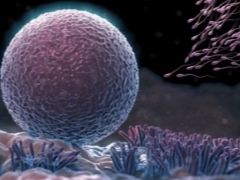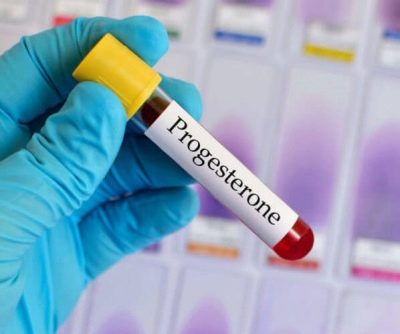All about the process of maturation of the egg
Every female body has about 1.5 million follicles from birth. Not all of them will later turn into eggs. This article will tell about how the process of maturation of eggs in women.
Features of the development of female germ cells
The whole period of ripening is quite complicated. Most of the biological processes occurring in the female body, have a certain cyclical nature. It is also characteristic for the maturation of the female germ cells - the eggs.
From the moment of birth, each girl has her own set of follicles. They had formed in her still in the period of life in the womb. Nature has conceived so that the total number of follicles should be enough for a woman to fulfill her biological function - procreation.
For the first time the process of maturation of the eggs begins during puberty. At this time, the teenage girl has her first menstruation. The appearance of menstruation is the first signal of the female body that eggs have begun to mature in it.
With a normal flow of the menstrual cycle and the absence of certain gynecological pathologies, the egg matures every month. This process occurs in women for almost the entire life and ends only during menopause. All the time when the eggs mature, doctors define it as a period of reproduction. During this period, a woman is able to conceive a baby naturally and become a mother.
Conventionally, the whole menstrual cycle in a woman can be divided into several phases. They consistently replace each other. Note that the duration of each of them is individual. Consider these phases.
- Menstruation. The first day of menstruation is the beginning of the menstrual cycle. The day before the month ends the previous cycle. The duration of menstruation may be different. On average, it is 3-5 days.
- Proliferative. It starts immediately after menstruation and lasts immediately until the day of ovulation. During this time, the dominant follicle is maturing in the ovaries and the egg cell leaves it. With a 28-day menstrual cycle, the duration of this phase is 13-14 days.
- Ovulation. In most cases, falls in the middle of the menstrual cycle. At this time, a mature egg leaves the abdominal cavity from a burst follicle.
- Secretory (luteal, progesterone). It comes immediately after ovulation and lasts until the first day of the next menstruation. At this time, the female body is preparing for the next menstrual cycle, and therefore for a possible pregnancy.
It often happens that a simple calendar calculation of the date of ovulation in practice does not have a reliable result. For a number of reasons, a woman’s follicular phase can be shorter, and luteal phase can have a longer duration.
In such a situation, the exact date of ovulation can be determined only by means of a special pharmacy test or by the method of ultrasound examination of the ovaries - folliculometry.
Each woman has its own individual characteristics. So, in one woman, the eggs most often mature in the right ovary, while the other may have the opposite situation.Strictly alternating in the work of the ovaries almost never happens. Mature eggs can simultaneously in each of them. This process is very individual.
How to ripen?
As menstruation approaches, the egg begins to mature in the ovary. At the same time only one follicle usually grows in size. This feature is conceived by nature in order to further develop a singleton fetus in a woman. However, in every rule there are exceptions.
It also happens that in one month not one, but several eggs matures. If a woman for some reason has ripened two eggs at the same time, then this significantly increases the probability of conceiving twins.
The egg cell is located in the ovary in a special anatomical formation called the follicle. Under the influence of specific hormones, several follicles grow simultaneously at once, but then only one of them increases. His experts call it dominant. In the future, it is in it that the egg cell for the given menstrual cycle will actively ripen.
Every day the dominant follicle grows in size. Every day before ovulation, it increases by 2 mm. When it reaches a size of 1.8-2 cm, it usually bursts, and an egg cell comes out of it. At this time, she already reaches sufficient maturity in order to make conception possible.
In order for fertilization to be possible, the egg travels a difficult path, moving from the ovary to the fallopian tube. In it, she can meet with sperm. Usually, the egg retains its viability during the day.
Many women mistakenly believe that only one sperm cell is required for conception. This is not entirely true. In order for fertilization to take place, quite a lot of active and viable sperm are required. They are necessary so that only one “lucky” one penetrates the egg cell and conception occurs.
If fertilization has not occurred, then the egg will inevitably die. In its place in the ovaries a special formation is formed - the corpus luteum. Before it appears, a blood clot forms in place of a bursting follicle, but it is absorbed by progesterone (a female sex hormone) and is replaced by a corpus luteum.
If the pregnancy has not come, then the corpus luteum regresses. It also helps to reduce the level of progesterone in the blood. At the same time begins to increase the concentration of estrogen - female sex hormones. Changes in hormonal background contribute to the beginning of a new period of egg maturation for the next menstrual cycle.
The process of egg maturation in women of reproductive age is continuous. As soon as one egg matured and came out, almost immediately the process of maturation of the new one begins. It is important to note that even in a healthy woman, several anovulatory cycles can occur in a lifetime. This means that in some menstrual cycle the follicle is formed, but there is no egg in it. This situation is also called “empty follicle syndrome”. It usually develops no more often than once a year.
If anovulatory cycles occur in a woman more often, then this may already lead to a decrease in her reproductive function and even cause infertility.
How long does it take?
The egg cell matures over time. This period is determined by the duration of the menstrual cycle. Its duration is different for each woman and is determined by a whole set of various factors.
According to statistics, the average duration of the menstrual cycle in women is 28-30 days. In this case, the date of ovulation (the appearance of a ripe egg) falls on the 14-15 day of the cycle. On the day of ovulation, it can be understood that the egg has already fully matured. Each of the periods of the menstrual cycle is accompanied by the development of certain symptoms in women.So, during ovulation, they feel, as a rule, an emotional lift, their appetite improves and their libido increases. In the post-ovulation period, the hormonal background changes.
A few days before the onset of menstruation, many women experience symptoms of premenstrual syndrome. At this time, they usually deteriorate mood, may appear rash on the body, increased appetite and swelling develop. In this case, after menstruation, all adverse events disappear.
What can affect?
Impact on the menstrual cycle of women can have a variety of factors. Not all 1.5 million of follicles given by nature will remain in the female body until menopause begins. Very many of them just die.
Most of the time for maturation of the eggs affects a few moments.
- Bad habits. Scientists believe that long-term smoking and alcohol abuse can have a detrimental effect on eggs. Women with destructive habits may face problems of infertility.
- Strong and debilitating psycho-emotional stress. During stress in the female body changes hormones. This contributes to the displacement of the phases of the flow of the menstrual cycle, and, therefore, can affect ovulation. Also, such changes can lead and uncontrolled intake of high doses of vitamins.
- Medication. Oral contraceptives, which are often used by women in the form of tablets, affect hormonal levels. This contributes to the fact that the duration of the menstrual cycle, and hence the process of maturation of the eggs, may change.
Also, such changes can lead and uncontrolled intake of high doses of vitamins.
All about the signs of ovulation of the egg can be found in the following video.





















